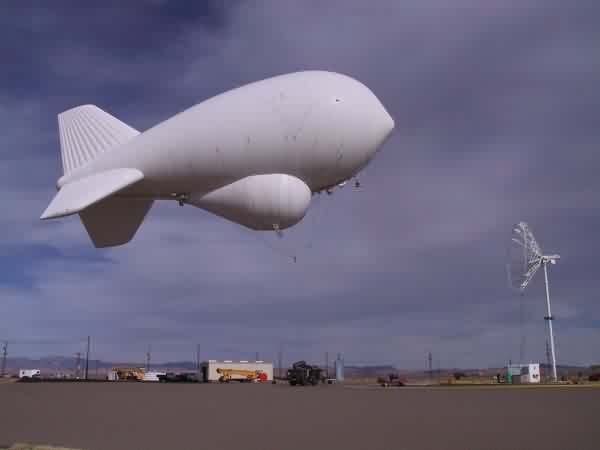
Unclassified
The Marfa tethered aerostat is one of a dozen or so blimp-like airships that are located along the southern border of the U.S., from California to Puerto Rico. The purpose of this aerostat system is to create an electronic veil that monitors and protects the southern border against unauthorized entry by low-flying aircraft, presumably carrying illegal drugs or immigrants. These aerostats are equipped with a very sophisticated 360-degree radar system and a diesel generator mounted in a pod under the aerostat and are "flown" between 8,000 and 15,000 feet above ground.

The aerostats are unmanned and, as the name implies, they remain connected to the ground by a 1-inch diameter kevlar tether. Multiple computer systems, both on the aerostat and in the Operations Building on the ground, monitor every parameter of the balloon, radar and generator equipment, and local weather conditions. These aerostats are capable of being flown for up to a week before the generator`s fuel tank must be refilled or routine maintenance is necessary on the radar and aerostat. However, high winds, heavy precipitation, and other factors usually are cause to bring the aerostat down early. The aerostats are spaced at overlapping intervals so that the temporary lowering of any one aerostat will not leave a hole in the radar coverage. It takes between 30 minutes and 2 hours to launch or recover the aerostat, depending on the urgency of the situation.

When the aerostat is brought down, it`s nose is docked to a mast; however, the balloon is still "flying" and subject to weathervaning, which causes it to gently and slowly pivot about it`s mooring mast in the slightest of breezes. Maintenance to the on-board equipment is done by bucket truck. (You have to look very closely to spot the workers in the bucket under the airship.)
These aerostats are semi-flexible, constructed of what can best be described as a rubberized cloth (although this is a very poor and non-technical description) and has an internal rigid truss-type structure to support the equipment. Although the aerostats technology, construction, and materials are less than 20 years old, much of the methods for launching and recovering the Giant have their roots in, and remain somewhat unchanged since, the giant airships of the 1920s! These things are very large, about the same size as the Goodyear Blimp, and are quite awesome up close. Because of their size, and their very slow movements, their nickname of "Gentle Giant" is very appropriate. At least for me, it was very intoxicating to just stand and watch it in awe!
This was one of our more-interesting assignments in a very beautiful part of Texas.
TSgt Harvey Hartman
Technician - Electronics Section
272nd EIS, TxANG
LaPorte, TX